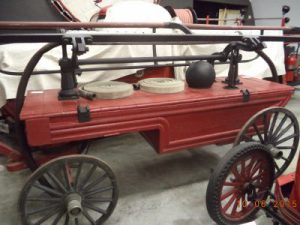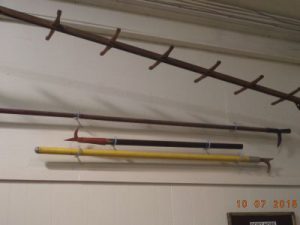HAND-DRAWN AND HAND-POWERED APPARATUS
Approximately 1800 to 1900.

During this period, fire brigades were proportionately much larger than in later periods. Pulling heavy apparatus to the scene over bad roads, hills, through mud or snow, and over obstacles, was very strenuous work. At the scene, pumping engines were powered by muscle, so a team of fire fighters working a pumper would be replaced every few minutes. Pumping engines generally developed moderate pressure but with very little volume.
Ladder companies were kept very busy placing ladders for rescue or fire attack, as well as clearing away combustibles from the fire scene, even if it meant pulling down adjacent structures, with the aid of large hooks and ropes. (Hence the name “Hook and Ladder Company”). A community of 1,000 in 1875 might have 60 fire fighters; 40 in the engine (pumper) company, and 20 in the hook and ladder company. It was common for each company to have its own fire hall and officers, and to operate independently of each other.


